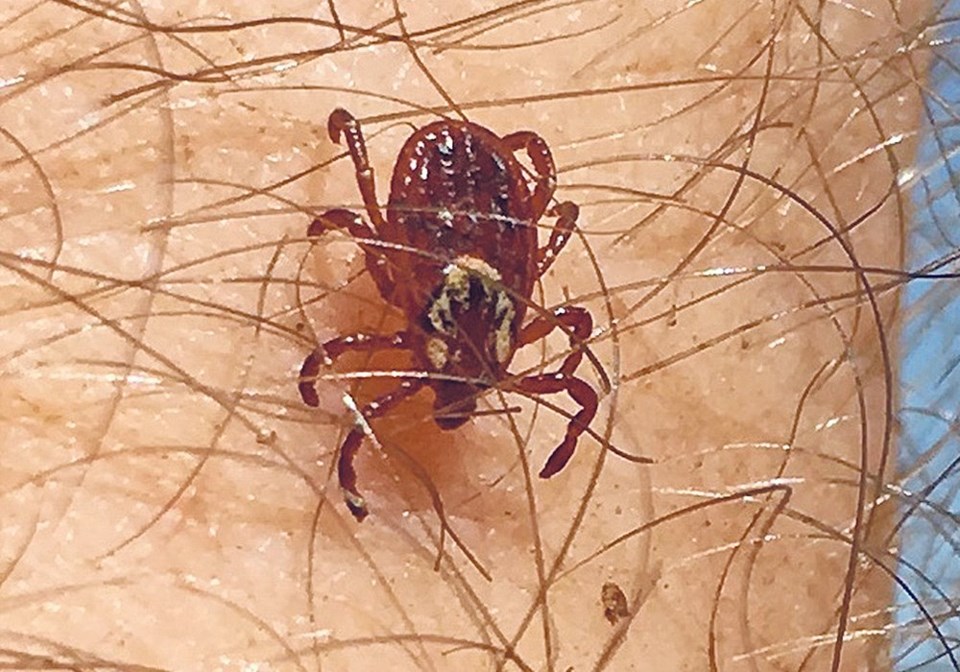WESTERN PRODUCER — As winter comes to an end, tick season is just beginning for people and livestock across the Prairies.
The Saskatchewan government website reminds the public to “be vigilant and monitor for ticks on themselves and their pets.”
While the most common tick on the Prairies is the American dog tick, which cannot transmit Lyme disease, there have been a few rare cases of blacklegged ticks that carry and transmit the disease.
Lyme disease symptoms are “fever, chills, headache, fatigue, muscle and joint aches or swollen lymph nodes,” according to the U.S.-based Centers for Disease Control and Prevention.
American dog ticks are active in Saskatchewan from mid-April to late-July, according to the Saskatchewan government, but that may be pushed back because of the late spring.
Blacklegged ticks remain active throughout the fall, so people should remain vigilant throughout the warm seasons.
The Saskatchewan government uses an online system called eTick, which allows the public to send in pictures of ticks they found or removed. People are encouraged to send in photos to help monitor the different species of ticks across the province.
In 2020, 2,678 ticks were identified and 12 were blacklegged ticks. In 2021, 969 ticks were submitted through eTick and 15 of those were blacklegged ticks.
The government website says to prevent tick bites, a person should wear pants and long-sleeved shirts, wear light-coloured clothes so ticks can be easily spotted, use insect repellent containing DEET or Icaridin, and do full body checks after being outside.
It also reminds people not to use gasoline or other harmful substances while the tick is attached and not to crush the tick’s body after it is removed.
Ticks aren’t only a threat (and nuisance) to humans, but to livestock and pets as well. They advise that if a tick is found on pets to use tweezers to pinch to tick’s mouth as close to the skin as possible and slowly remove the tick.
For livestock, ticks are a constant threat of disease. Horses have been found to contract lyme disease from blacklegged ticks.
Cattle, bison and other livestock are at risk of anaplasmosis, although sheep and goats are less commonly affected.
Anaplasmosis can cause death of adult cattle, but can also cause “abortions, decreased weight gain, bull infertility.”
Ticks can transmit the disease to cattle, but adult ticks not carrying the virus that finish feeding on a cow with anaplasmosis may drop off and bite another cow while carrying the infected blood, transferring the disease. Ticks can carry the parasite throughout its life cycle and transmit months after acquiring it.
While the disease is rare in Canada, according to the Beef Cattle Research Council, Rocky Mountain wood ticks are found across the Prairies and are known for carrying the disease.



